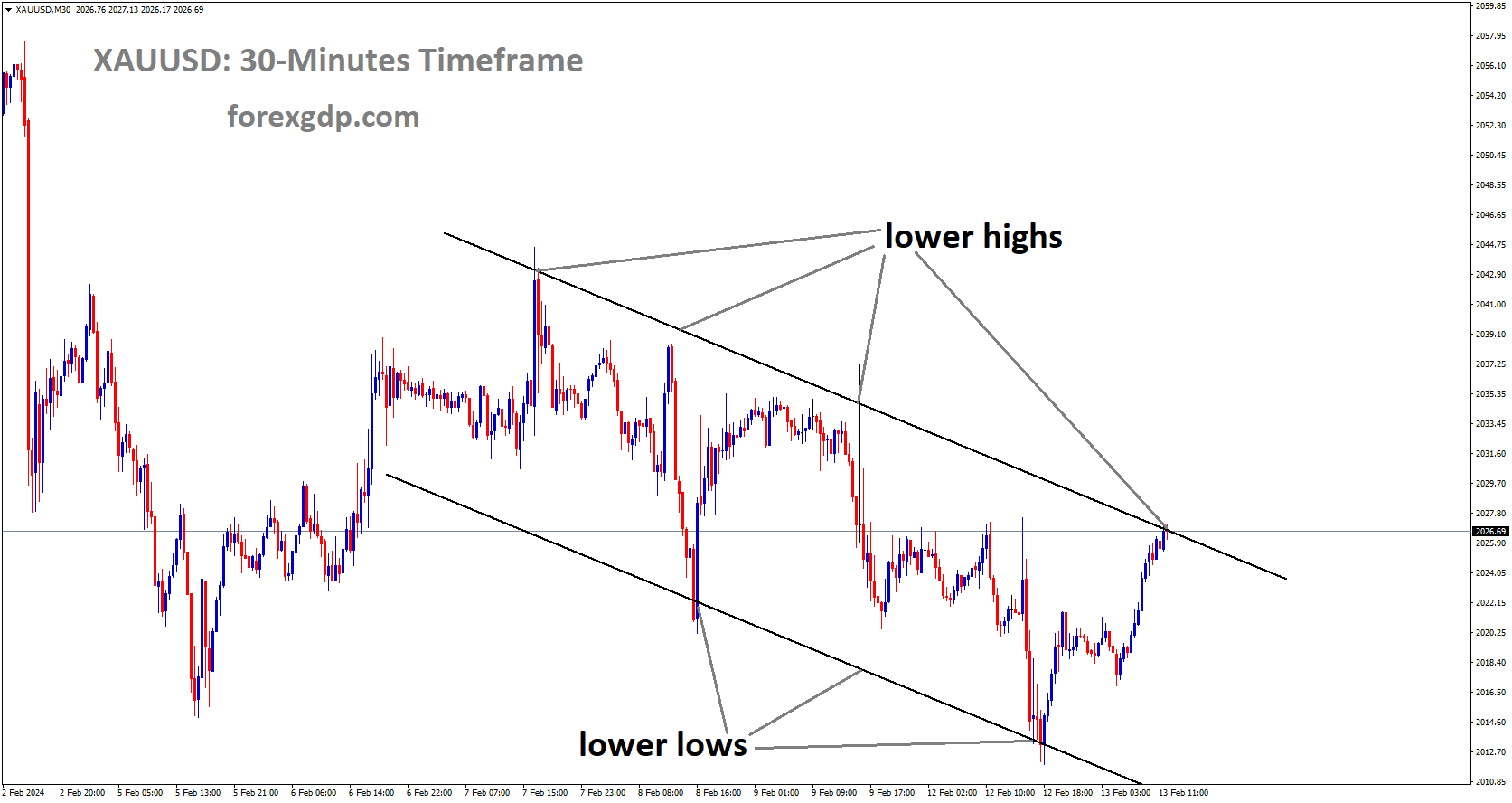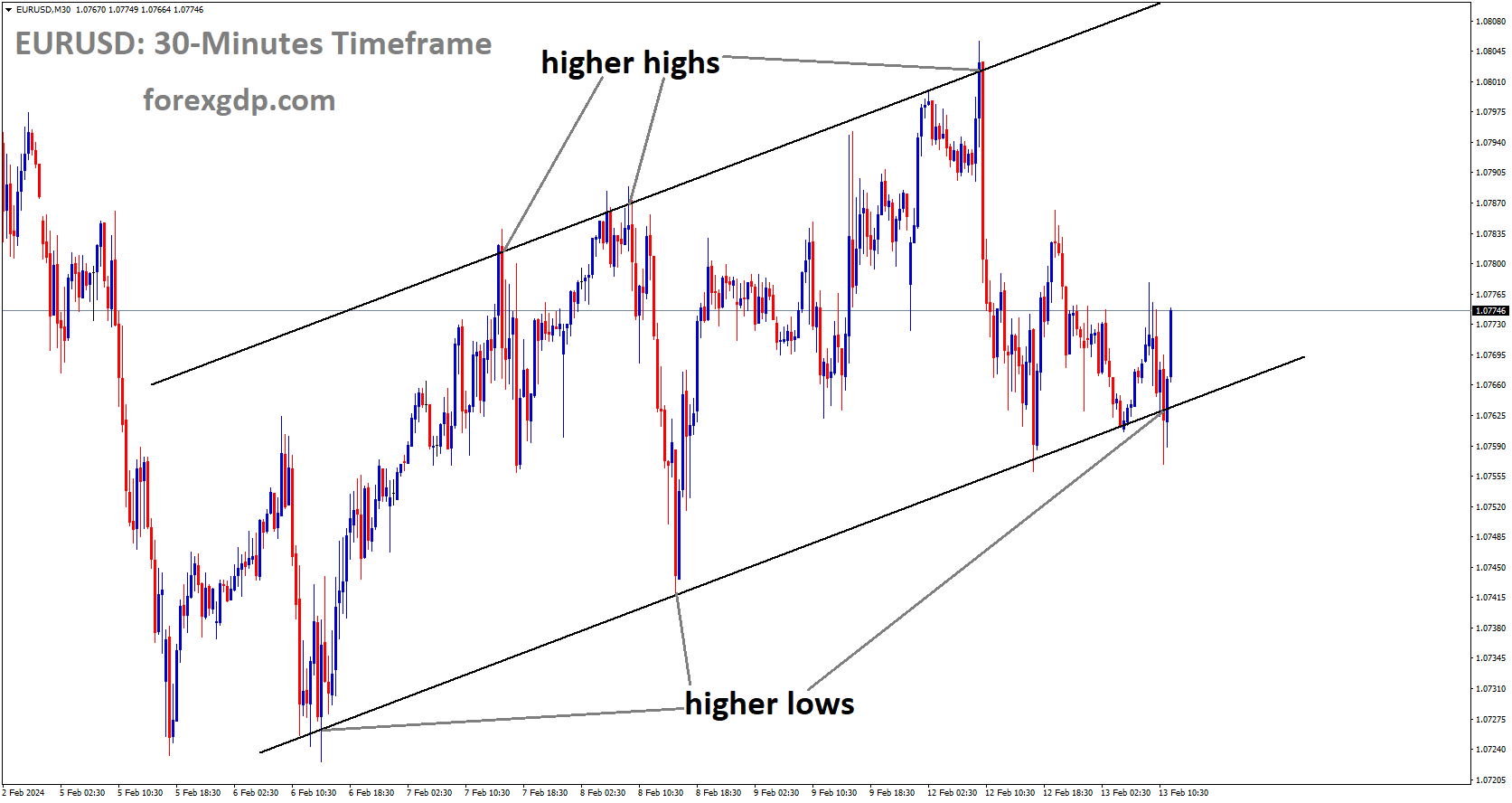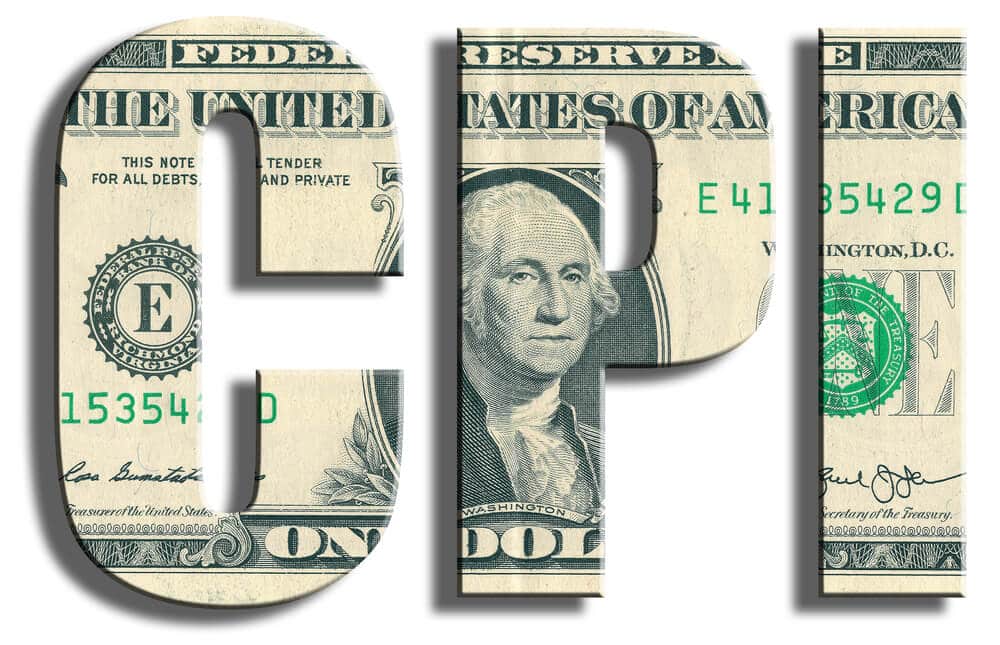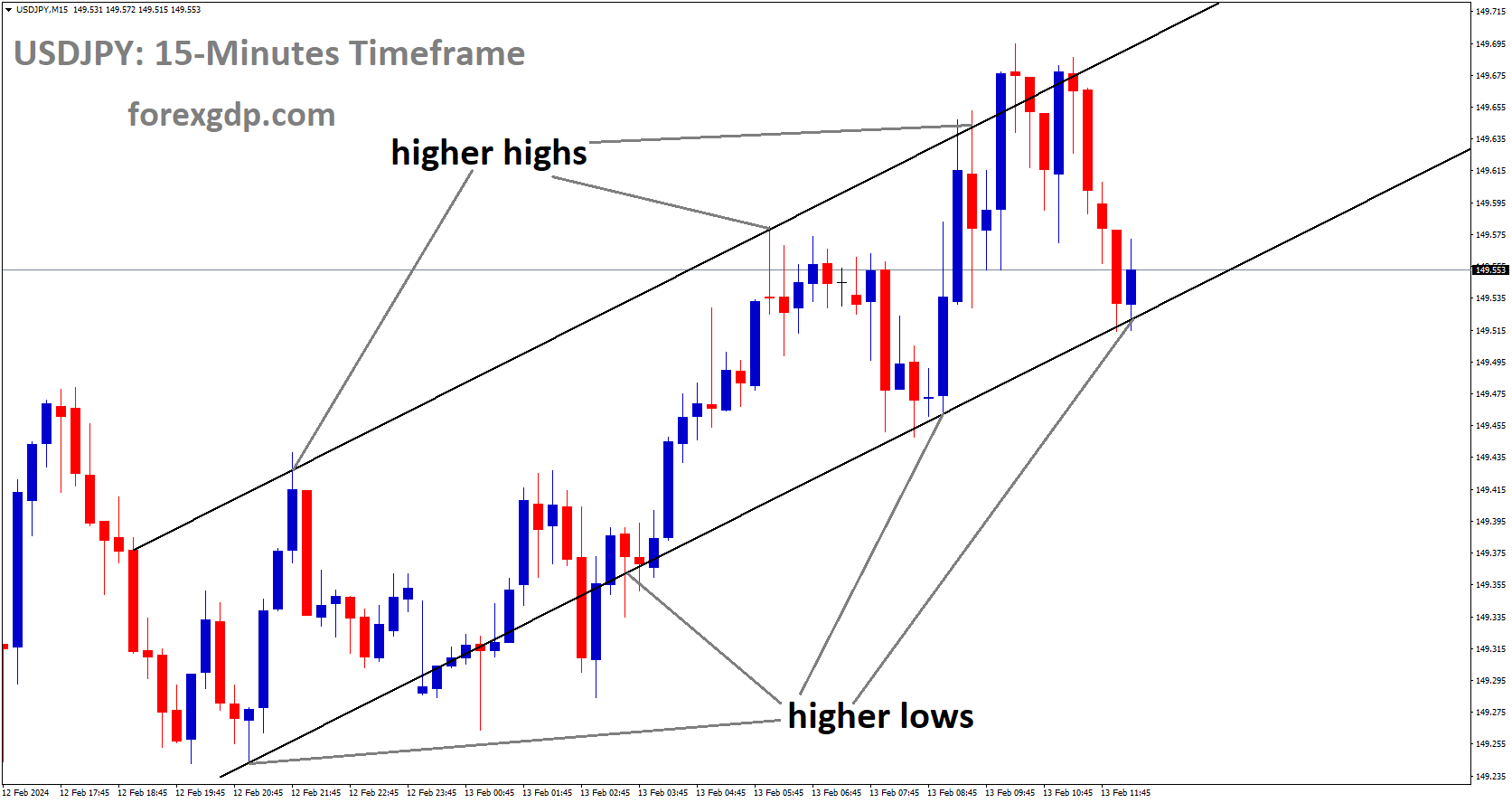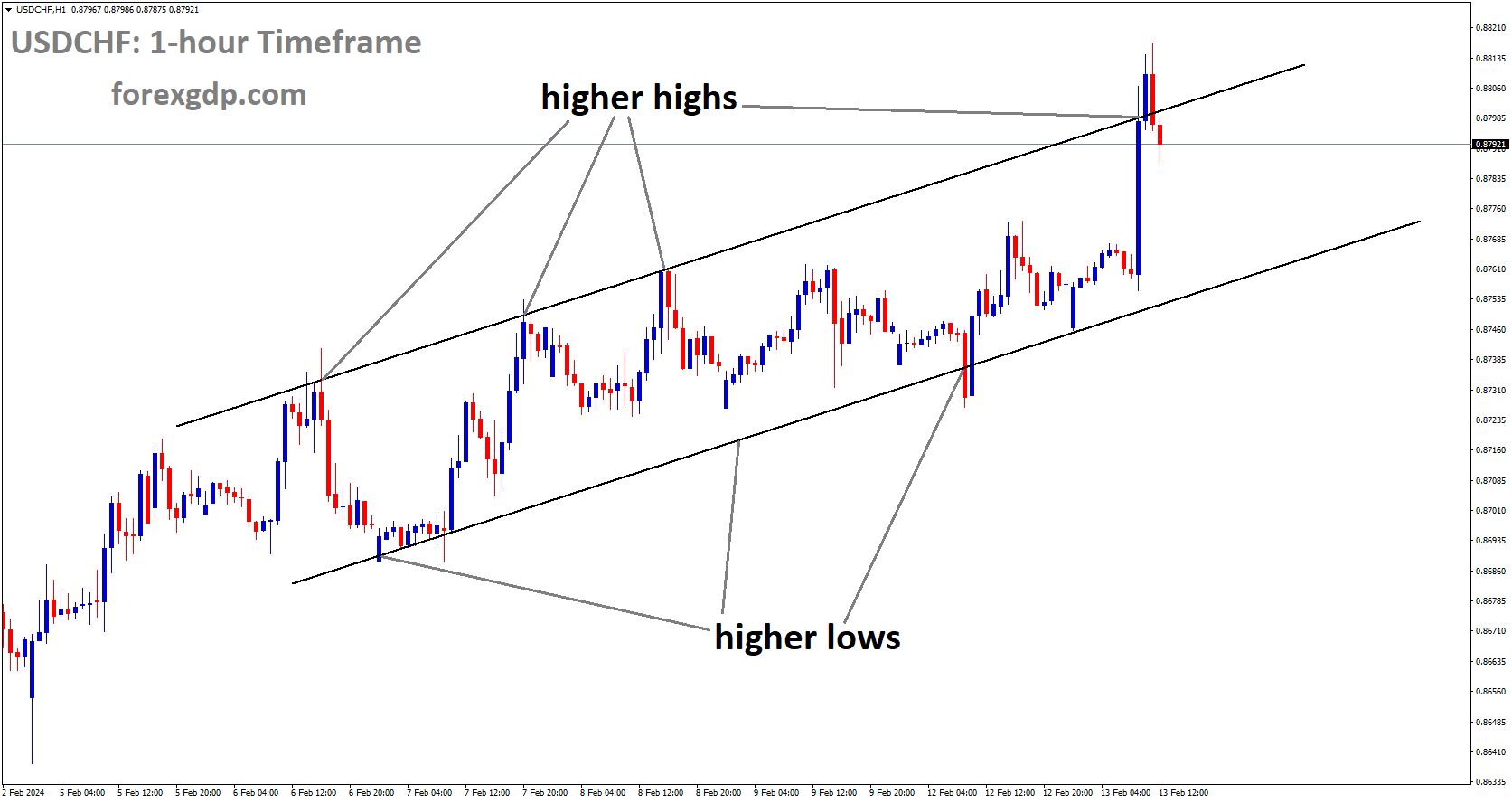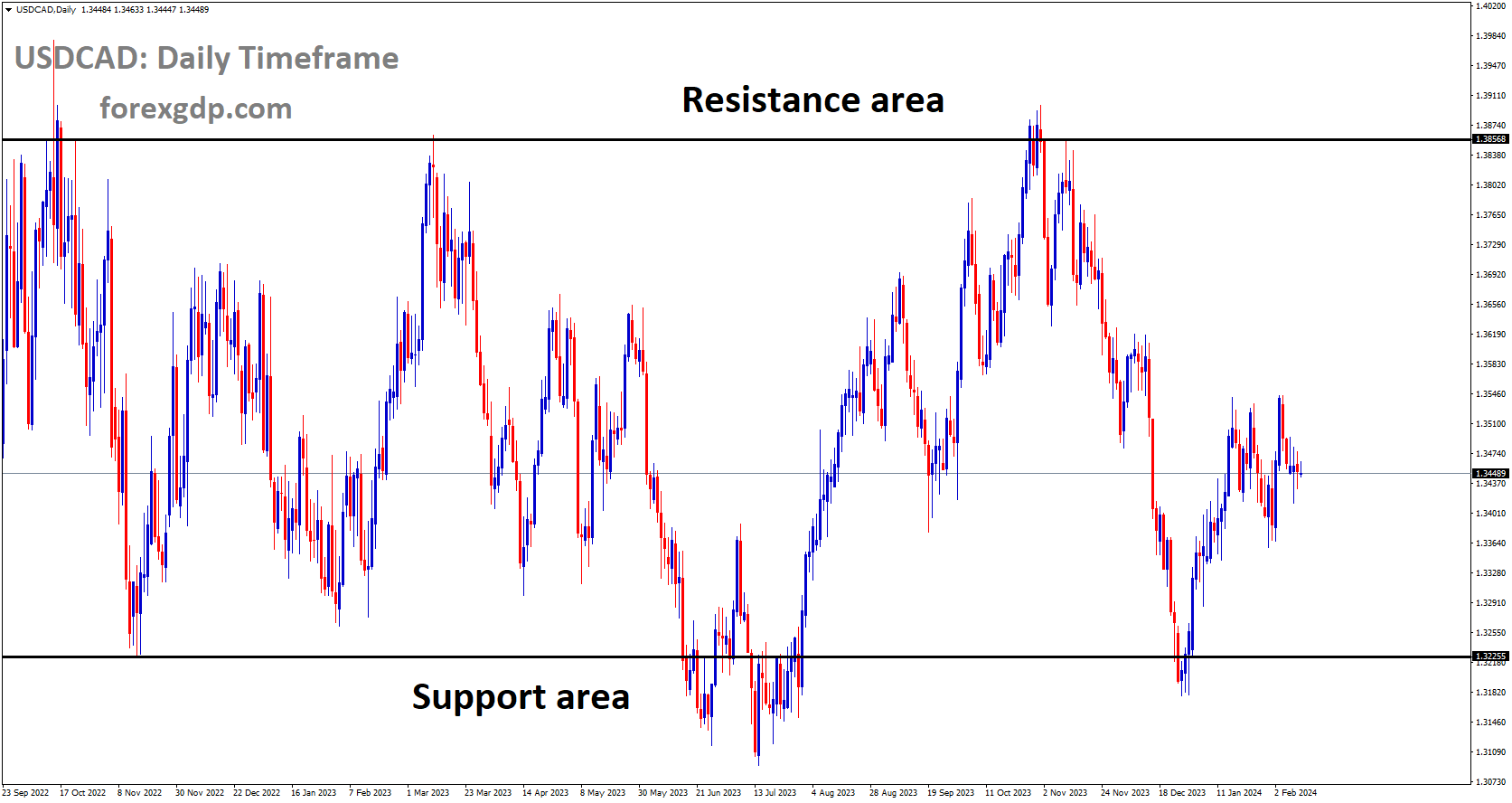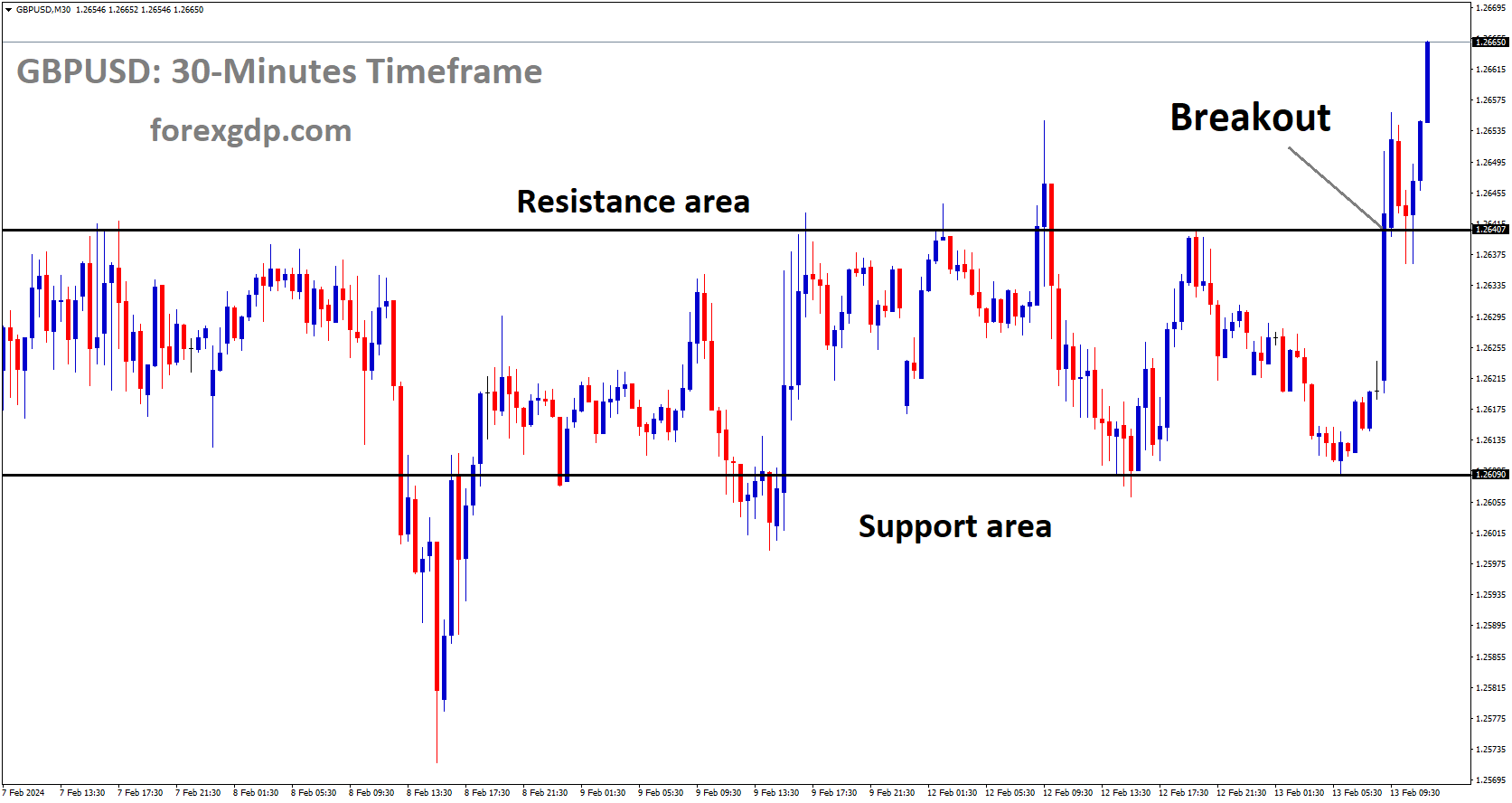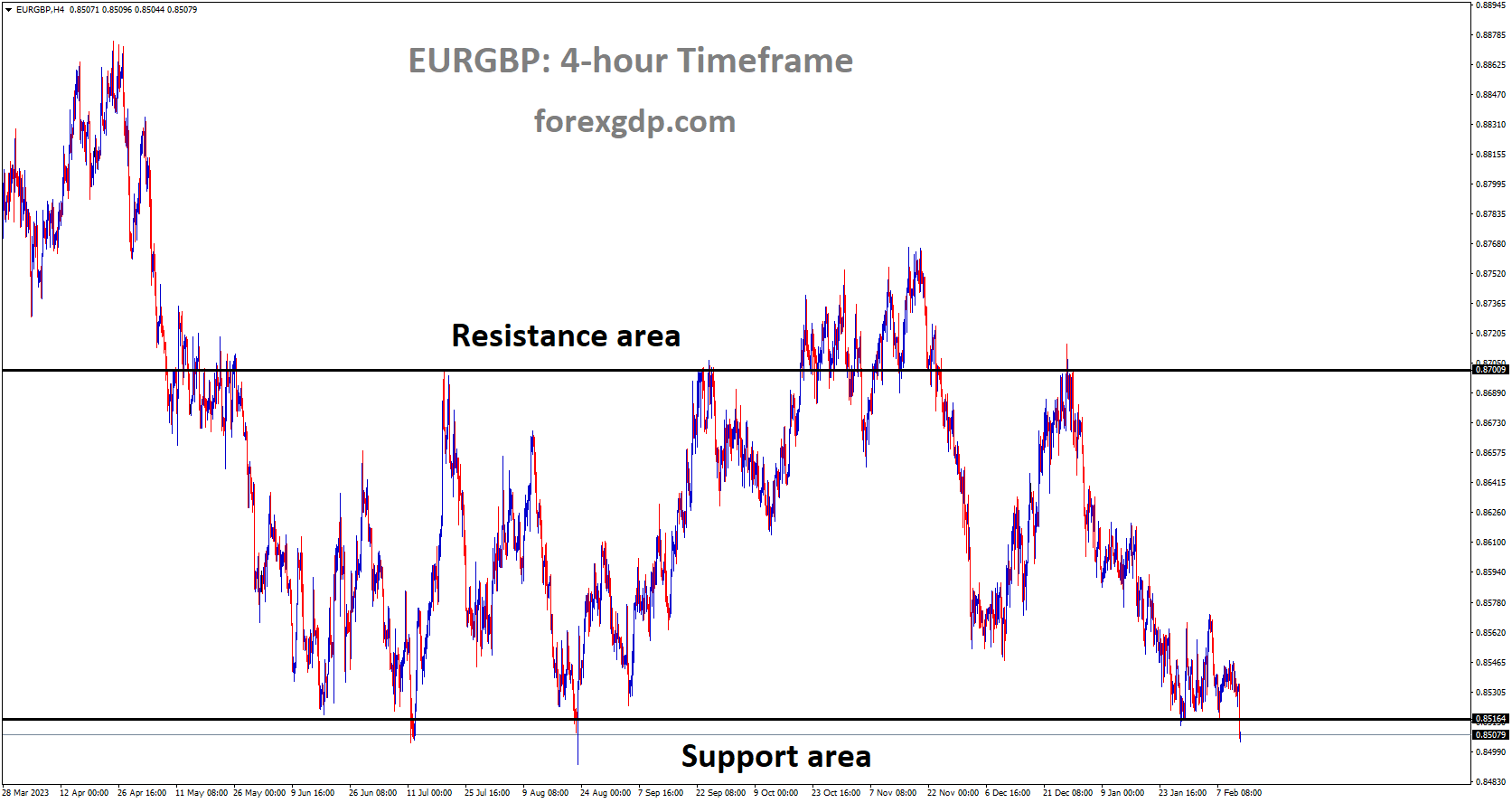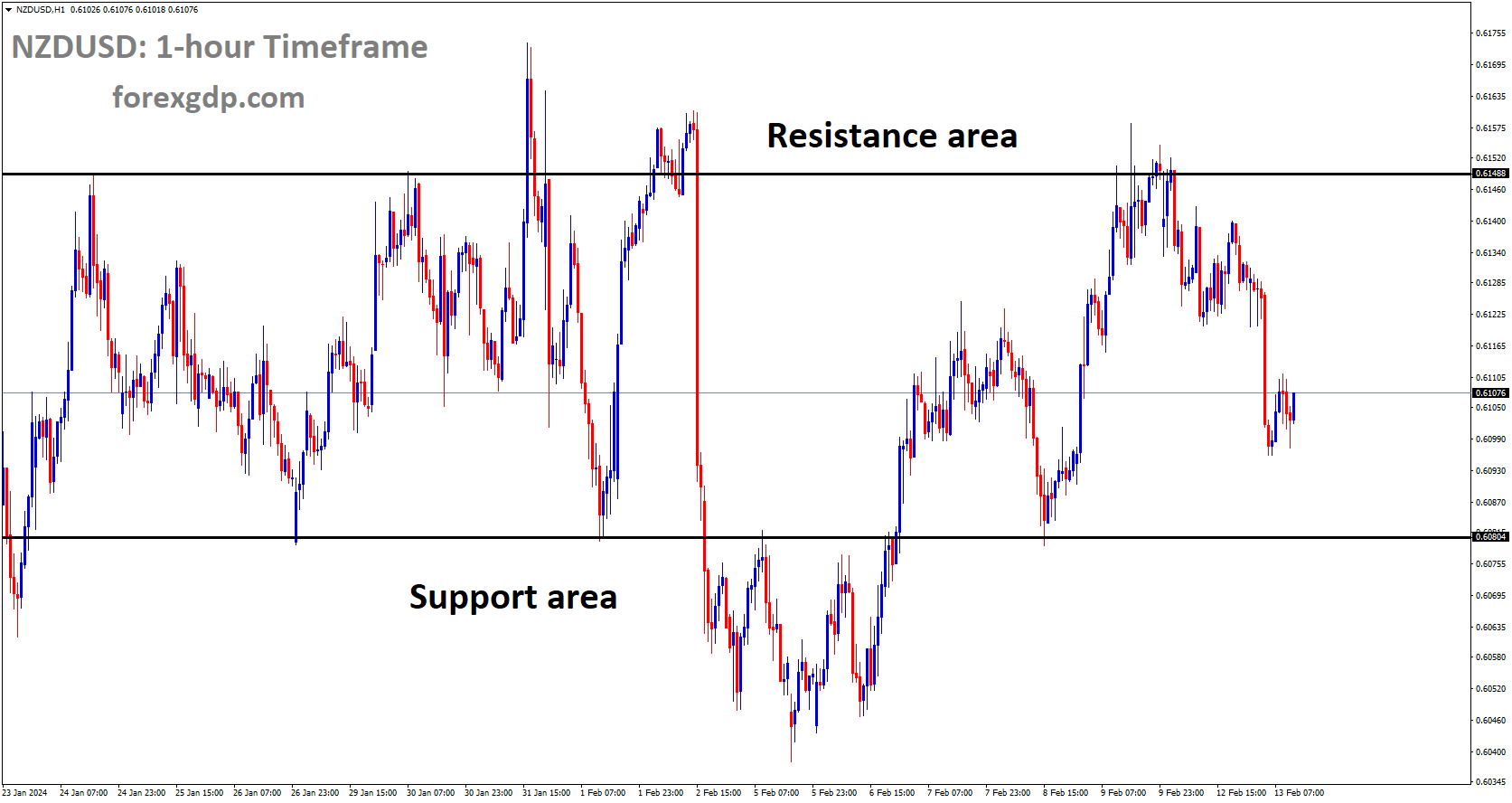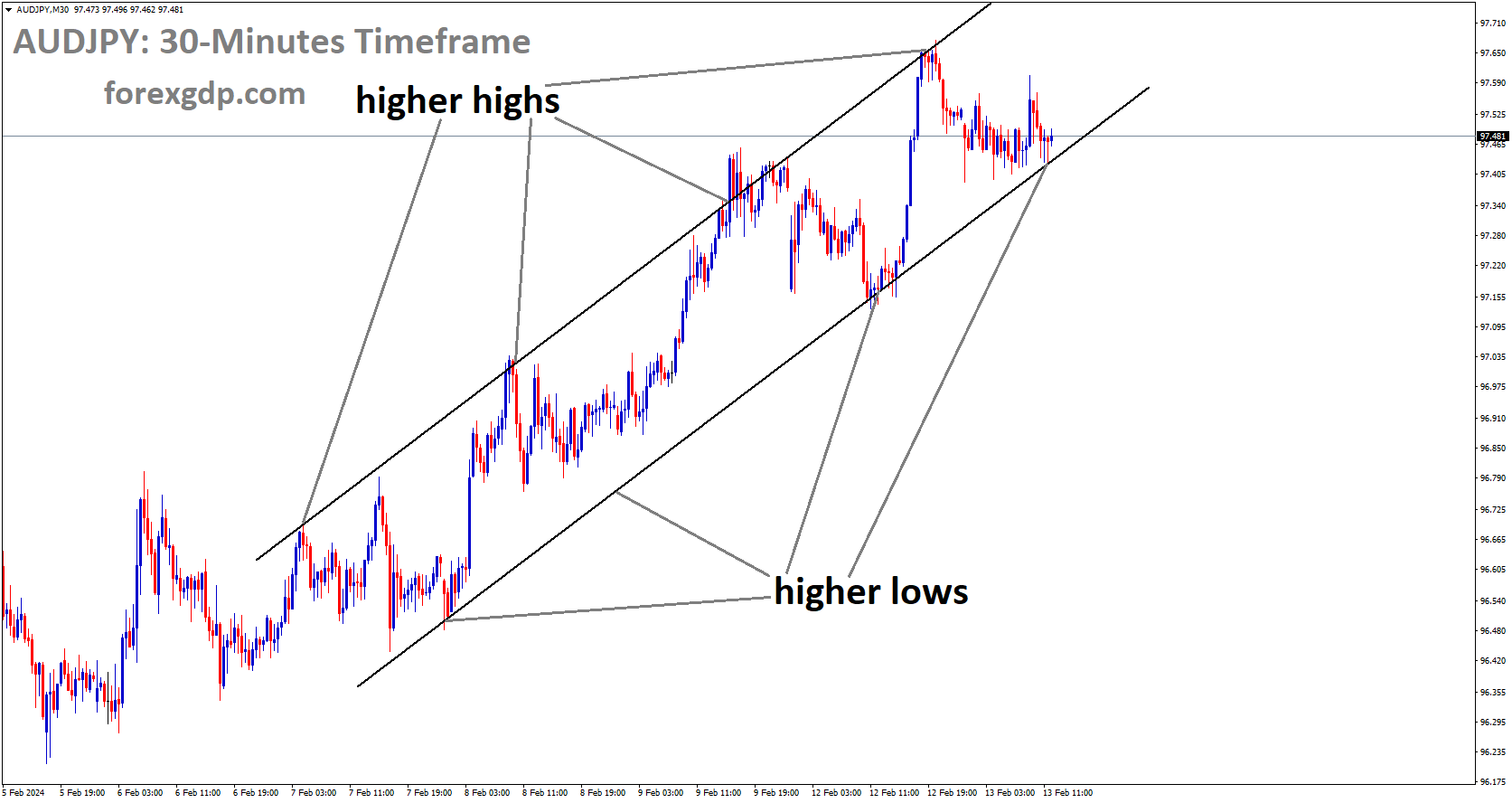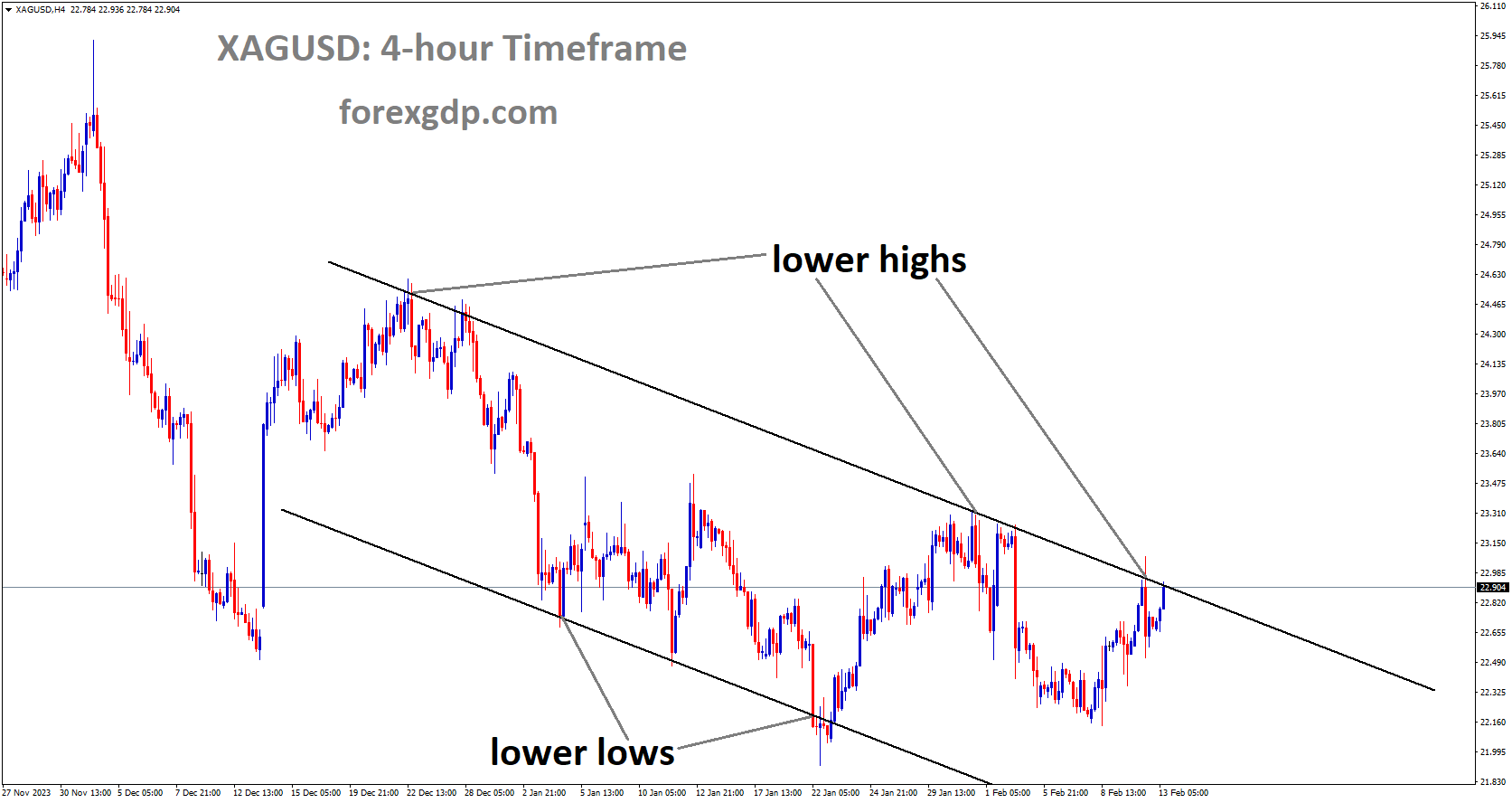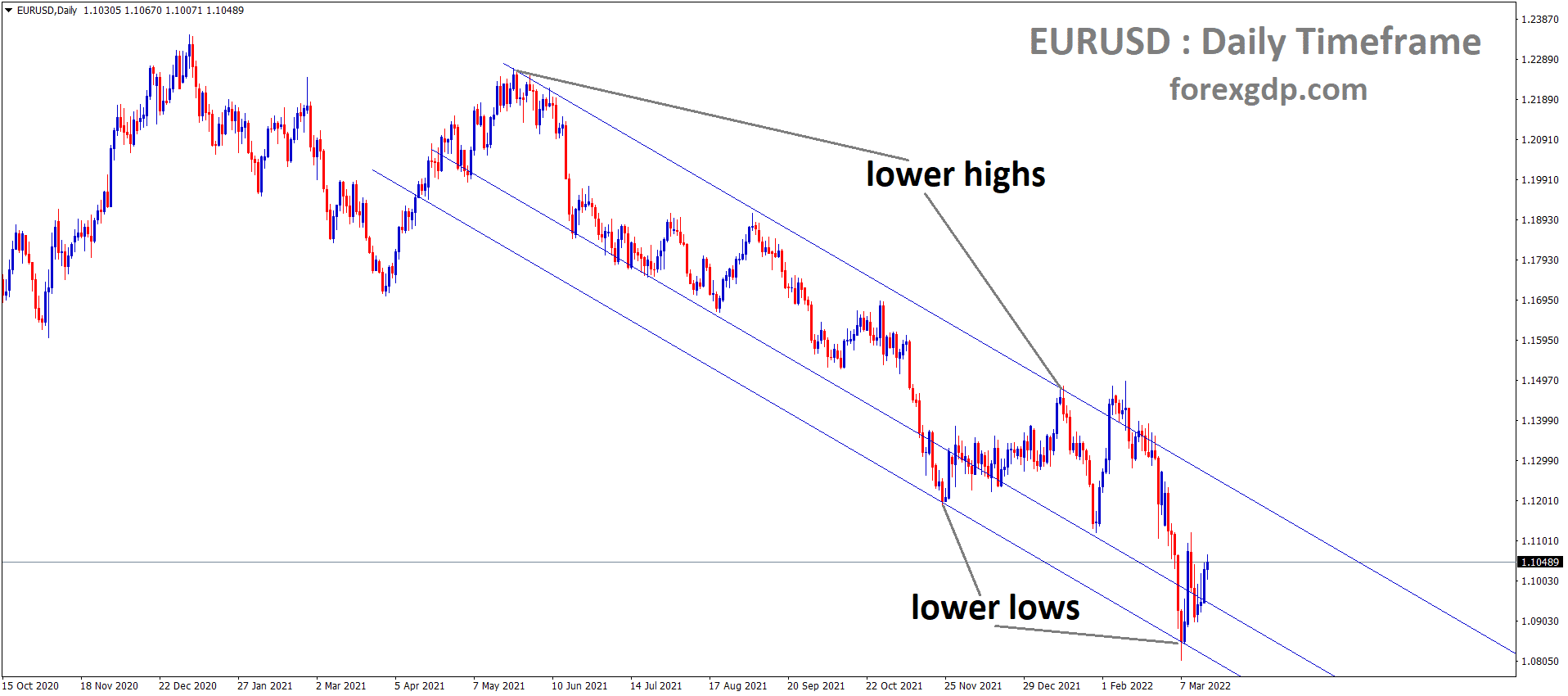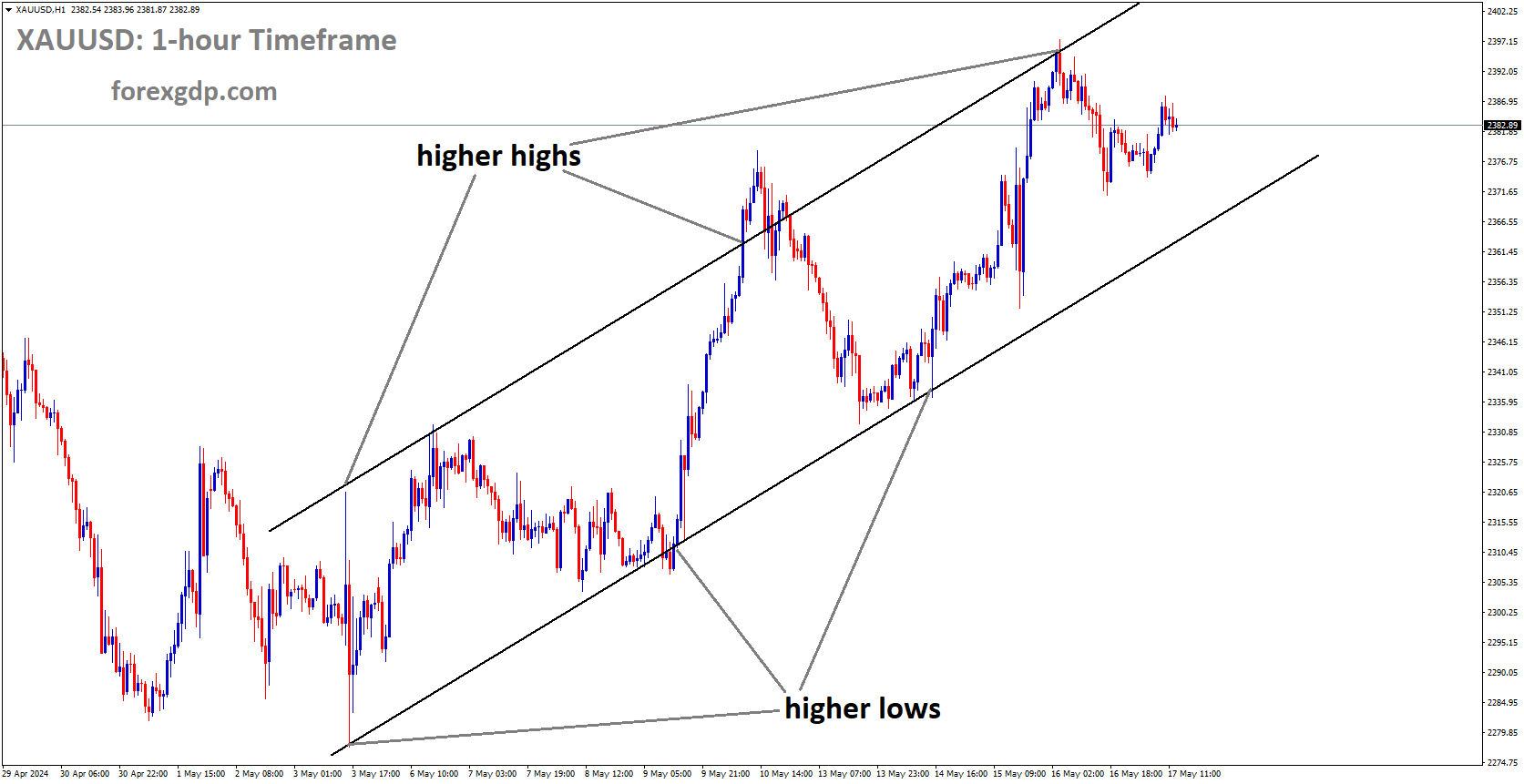XAUUSD is moving in Descending channel and market has reached lower high area of the channel
XAUUSD – Fed Policy, Chinese Stimulus, and Gold Price Trends
Federal Reserve Stance on Rate Cuts:
Multiple Federal Reserve officials have reiterated the necessity for substantial evidence of progress in inflation before considering any rate cuts. This indicates a cautious approach by the Fed towards adjusting interest rates, emphasizing the importance of economic indicators, particularly inflation data.
Potential Impact of Chinese Stimulus on Gold Prices:
The possibility of further stimulus announcements from China has the potential to boost gold prices. China’s economic policies and stimulus measures often have significant effects on global commodity markets, including gold.
Anticipation of US January Consumer Price Index (CPI):
Investors and traders are closely awaiting the release of the US January CPI data, scheduled for Tuesday.
This CPI data is expected to be a focal point for financial markets as it provides insights into inflation trends, which in turn influence monetary policy decisions.
Recent Trends in Gold Prices:
Gold prices have been declining for five consecutive days during the early Asian trading sessions.
This downward trend in gold prices is attributed to the prevailing narrative from the Federal Reserve, which suggests a prolonged period of higher interest rates.
Market Reaction to Fed’s Rate Stance:
The stance of the Federal Reserve, signaling a potentially prolonged period of higher interest rates, has exerted selling pressure on gold.
Investors are closely monitoring the Fed’s stance on interest rates for indications of future monetary policy adjustments.
US Dollar Index and Treasury Yields:
The US Dollar Index (DXY), a measure of the USD against a basket of currencies, is consolidating around a certain level.
Meanwhile, US Treasury yields, particularly the 10-year yield, have been edging higher, reaching 4.17%.
These movements in the US Dollar Index and Treasury yields reflect broader market sentiment and expectations regarding economic conditions.
Focus on CPI Data and Rate Expectations:
Fed officials have emphasized the importance of the upcoming January CPI data, which is anticipated to show a month-on-month increase of 0.2% and a year-on-year increase of 3.0%.
The Core CPI, which excludes volatile components like food and energy prices, is expected to show a higher increase.
Market expectations for rate cuts in 2024 have decreased, as indicated by futures pricing.
Impact of Chinese Economic Indicators:
Mainland China’s financial markets are closed for the Lunar New Year holidays, affecting trading dynamics in the region.
Recent Chinese economic data, such as the decline of 0.8% year-on-year in January’s inflation, suggests potential deflationary pressures.
However, the possibility of additional stimulus measures from Chinese authorities could limit the downside for gold prices.
Market Reaction and Trading Opportunities:
Gold traders are closely monitoring the US CPI data and, later in the week, the release of US Retail Sales figures.
These data points are expected to provide trading opportunities as investors react to developments in inflation and consumer spending, influencing gold prices accordingly.
EURUSD – Market Sentiment, Key Data Awaited, and Technical Indicators
EUR/USD Trading Activity:
The EUR/USD pair experiences a downward trend for the second consecutive day during the early European session on Tuesday.
Market sentiment turns cautious as investors await crucial US economic data.
EURUSD is moving in Ascending channel and market has rebounded from the higher low area of the channel
Focus on US Consumer Price Index (CPI):
The US Consumer Price Index (CPI) is scheduled for release later on Tuesday, drawing significant attention from market participants.
Analysts speculate that softer US inflation data could potentially boost the confidence of the Federal Reserve regarding the return of inflation to its target levels.
Potential Impact on the US Dollar (USD):
A scenario of softer US inflation data could weigh on the US Dollar (USD), as it may reinforce the Fed’s belief in the transitory nature of inflationary pressures.
Such an outcome could lead to downward pressure on the USD against major currencies like the Euro (EUR).
Current EUR/USD Exchange Rate:
As of the latest update, the EUR/USD pair is trading, representing a loss of 0.07% for the day.
This indicates a slight decline in the value of the Euro relative to the US Dollar in the current trading session.
Technical Analysis on EUR/USD:
Analysis of the four-hour chart reveals a continued bearish sentiment for the EUR/USD pair.
The pair remains below the key 100-period Exponential Moving Averages (EMA), indicating a prevailing downward trend.
The Relative Strength Index (RSI) further supports the bearish momentum, as it sits below the 50-midline, suggesting the possibility of further declines.
Bearish Momentum and Potential Declines:
The bearish sentiment in EUR/USD is reinforced by the technical indicators, suggesting that the downward momentum may continue.
Traders and investors should consider the possibility of further declines in the exchange rate, particularly in light of the impending US CPI data release.
Market Sentiment and Risk Factors:
The cautious mood prevailing in the market underscores the significance of upcoming economic data, particularly the US CPI figures.
Uncertainty regarding the implications of US inflation data on Federal Reserve policy adds to market volatility and risk.
Fed’s Stance on Inflation:
The reaction of the US Dollar to the CPI data will likely be influenced by the Federal Reserve’s stance on inflation.
A dovish interpretation of the data may bolster expectations for continued accommodative monetary policy, potentially weakening the USD.
Monitoring Economic Indicators:
Traders and investors are advised to closely monitor the release of the US CPI data and its impact on market dynamics.
Additionally, keeping track of central bank statements and economic indicators will be crucial in gauging future trends in the EUR/USD exchange rate.
The EUR/USD pair continues its downward trajectory amid a cautious market atmosphere ahead of the US CPI data release.
Technical indicators suggest a persistent bearish sentiment, indicating the potential for further declines in the exchange rate.
Traders should exercise caution and remain vigilant in response to evolving market conditions and economic data releases.
USDJPY – Gains Amid BoJ Concerns and Market Caution
USD/JPY Continues Upward Momentum:
The USD/JPY pair extends its gains for the second consecutive session, reflecting ongoing strength in the US Dollar against the Japanese Yen.
USDJPY is moving in Ascending channel and market has reached higher low area of the channel
Market Concerns Impacting the Japanese Yen:
The Japanese Yen experiences weakness due to market apprehension surrounding potential rate hikes by the Bank of Japan (BoJ).
Investors’ concerns stem from the BoJ’s departure from its ultra-dovish monetary policy stance, raising uncertainties about future monetary tightening measures.
BoJ’s Monetary Policy Outlook:
BoJ Deputy Governor Shinichi Uchida’s recent statements suggest a cautious approach towards aggressive tightening, despite the shift away from negative interest rates.
The Japanese Yen’s performance may also be influenced by its safe-haven status amid geopolitical tensions, such as those between Israel and Gaza.
Impact of US Treasury Yields on Greenback’s Advance:
While the US Dollar strengthens against the Japanese Yen, its advance may be limited by subdued US Treasury yields.
Presently, the 2-year and 10-year US yields stand at 4.47% and 4.18%, respectively, contributing to market dynamics.
Market Caution Ahead of US Inflation Data:
Traders exercise caution as they await the release of US inflation data scheduled for Tuesday.
Anticipation surrounding the inflation figures influences market sentiment, particularly regarding expectations of potential Federal Reserve rate cuts.
Focus on Japanese GDP Data:
In Japan, attention shifts towards the release of Gross Domestic Product (GDP) data scheduled for Thursday.
The GDP data release is expected to provide insights into Japan’s economic performance and its implications for monetary policy.
Expectations for US Consumer Price Index (CPI):
Analysts anticipate a moderation in the US Consumer Price Index (CPI), with a year-on-year increase of 2.9%, down from the previous rise of 3.4%.
The monthly rate is forecasted to remain unchanged at 0.2%, reflecting trends in inflationary pressures.
Anticipated Movement in Japan’s GDP:
Preliminary forecasts suggest an expected increase of 0.3% in Japan’s Gross Domestic Product (Q4), compared to the previous decline of 0.7%.
The GDP data release will be closely monitored for indications of economic recovery or contraction in Japan.
Overall, the USD/JPY pair’s movement reflects a complex interplay of factors including market sentiment, central bank policies, geopolitical tensions, and economic data releases. Traders are advised to stay informed and exercise caution in response to evolving market dynamics.
USDCHF – Focus on US CPI Data, German ZEW Survey, and OPEC Report in Currency Markets
Shift in Attention to US CPI Data:
Currency markets divert their focus to the release of the January Consumer Price Index (CPI) data from the United States scheduled for Tuesday.
Traders anticipate fresh market movements and potential shifts in currency pairs based on the outcome of the CPI report.
USDCHF is moving in Ascending channel and market has reached higher high area of the channel
Impact of German ZEW Survey:
Additionally, market participants eagerly await the results of the ZEW Survey from Germany, which could provide fresh impetus to currency markets during European trading hours.
The ZEW Survey’s insights into economic sentiment and expectations may influence trading dynamics for the Euro and other related currencies.
Release of OPEC Monthly Market Report:
OPEC (Organization of the Petroleum Exporting Countries) is set to release its Monthly Market Report, adding another element of interest for currency traders.
Any updates or forecasts regarding oil production and market trends could impact oil prices, thereby influencing commodity-linked currencies like the Canadian Dollar (CAD) and Norwegian Krone (NOK).
Anticipated Softening of US Inflation:
Annual inflation in the United States is forecasted to soften to 2.9% from 3.4% in December, according to market expectations.
Both the CPI and the core CPI are projected to rise by 0.2% and 0.3%, respectively, on a monthly basis.
These anticipated figures could shape expectations regarding the Federal Reserve’s monetary policy stance and potential market reactions.
Market Reaction Ahead of US CPI Data:
In anticipation of the key US inflation data, US stock index futures trade marginally lower.
Meanwhile, the benchmark 10-year US Treasury bond yield remains near 4.2%, indicating cautious investor sentiment and potential market volatility ahead of the CPI release.
Impact on Swiss Franc:
The annual CPI in Switzerland rose by 1.3% in January, falling short of market expectations and December’s increase of 1.7%.
This initial reaction weighed on the Swiss Franc, with the USD/CHF currency pair seen rising nearly 0.5% on the day, reflecting shifting market dynamics and currency movements.
Market Analysis and Trading Strategies:
Traders will closely analyze the US CPI data, German ZEW Survey results, and OPEC Monthly Market Report to identify trading opportunities and adjust their strategies accordingly.
Volatility in currency markets is expected as traders react to economic data releases and geopolitical developments, highlighting the importance of risk management and staying informed of market events.
USDCAD – Rises on Market Caution Before US Inflation Data
USD/CAD Momentum Shift:
USD/CAD experiences an upward movement as the market adopts a cautious stance in anticipation of upcoming US inflation data.
This shift in momentum reflects heightened uncertainty among traders, leading to adjustments in currency pairs like USD/CAD.
USDCAD is moving in box pattern and market has rebounded from the support area of the pattern
US Inflation Expectations:
Market forecasts suggest an easing in headline US inflation to 2.9% in January from the previous level of 3.4%.
The anticipated moderation in inflation figures is a key factor influencing trading sentiment and currency movements.
Potential Impact on USD Strength:
The outcome of the US inflation data release has implications for the strength of the US Dollar (USD) against other currencies, including the Canadian Dollar (CAD).
Traders closely monitor inflation trends for insights into the Federal Reserve’s monetary policy outlook and potential interest rate adjustments.
Support from WTI Oil Prices:
The Canadian Dollar (CAD) may find support from upbeat West Texas Intermediate (WTI) crude oil prices.
Oil prices often have a significant impact on the Canadian economy due to its status as a major oil exporter, influencing the strength of the Canadian Dollar.
USD/CAD Breaks Declining Trend:
USD/CAD breaks a five-day declining trend as the US Dollar strengthens relative to the Canadian Dollar.
This reversal in trend highlights the influence of changing market dynamics and shifting investor sentiment ahead of key economic data releases.
Cautious Stance Ahead of US Inflation Data:
Traders exercise caution leading up to the release of US inflation data, as the outcome could significantly impact currency markets.
Anticipation of potential changes in inflation figures prompts market participants to adjust their positions and trading strategies accordingly.
Forecasts for US Consumer Price Index (CPI):
Year-on-year (YoY) forecasts for the US Consumer Price Index (CPI) project a decrease to 2.9%, down from the previous level of 3.4%.
Monthly CPI rates are expected to remain unchanged at 0.2%, indicating stability in inflationary pressures over the short term.
Core CPI Expectations:
YoY core CPI is anticipated to rise by 2.9%, a decrease from the previous increase of 3.4%.
Monthly core inflation rates are forecasted to remain steady at 0.3%, reflecting ongoing trends in underlying inflationary factors.
The movement of USD/CAD reflects the cautious stance of market participants ahead of the release of US inflation data. Expectations for moderation in inflation figures and support from WTI oil prices contribute to the dynamics shaping the currency pair’s performance. Traders closely monitor economic indicators and adjust their strategies in response to evolving market conditions and data releases.
GBPUSD – Fed Rate Expectations, BoE Outlook, and Key Data Releases
Market Expectations Regarding Fed Rate Cuts:
There is a prevailing anticipation in the markets that the Federal Reserve (Fed) will commence easing rates around May or June.
This expectation reflects investors’ outlook on the direction of monetary policy in response to economic conditions.
GBPUSD has broken box pattern in upside
Bank of England’s Assessment of UK Economy:
Bank of England (BoE) Governor Andrew Bailey has remarked on signs of improvement in the UK economy.
Bailey’s comments indicate a degree of optimism regarding economic performance, suggesting potential shifts in monetary policy.
Focus on UK Labor Market and US Inflation Data:
Investors are closely monitoring upcoming UK labor market data and US inflation reports for potential market catalysts.
These data releases are expected to impact market sentiment and could trigger volatility in financial markets.
Fed’s Stance on Rate Cuts:
Federal Reserve Chair Jerome Powell recently indicated that rate cuts are unlikely to commence in March.
Investors are now looking towards May or June as potential starting points for rate easing, awaiting further evidence on inflation trends.
Importance of US January Consumer Price Index (CPI):
The US January Consumer Price Index (CPI) is anticipated to provide insights into the timing of potential rate cuts by the Fed.
Market participants will scrutinize the CPI data for indications of inflationary pressures and their implications for monetary policy.
Bank of England’s Economic Outlook:
Bank of England policymakers have expressed varying views on monetary policy and the UK economy.
While some policymakers, like Sarah Breeden, have signaled a shift in outlook towards potential rate cuts, others, such as Jonathan Haskel and Catherine Mann, emphasize upside risks to price pressures.
Upcoming UK Labor Market Data:
Key indicators such as Employment Change, ILO Unemployment Rate, and Claimant Count Change for the UK labor market are due for release.
These data points will offer insights into the health of the UK labor market, influencing perceptions of economic performance.
US CPI Inflation Data Release:
The release of US CPI inflation data for January is expected to draw significant attention from investors.
This data release will play a crucial role in shaping expectations regarding inflation trends and potential Fed policy responses.
Upcoming UK Producer Price Index (PPI) and GDP Data:
Market attention will later shift towards the release of UK Producer Price Index (PPI) and Gross Domestic Product (GDP) data.
These indicators will provide further clarity on economic conditions in the UK, potentially guiding market movements.
The combination of upcoming data releases and central bank statements is likely to influence the direction of major currency pairs, particularly the EUR/USD.
Traders should remain attentive to developments in economic indicators and central bank communications to navigate market volatility effectively.
EURGBP – UK Labor Data, ECB Rate Expectations, and EUR/GBP Cross
UK ILO Unemployment Rate Decline:
The UK Office for National Statistics reports a decrease in the ILO Unemployment Rate to 3.8% for the three months ending in December, surpassing the previous reading of 4.2% and exceeding market expectations.
Concurrently, the number of individuals claiming jobless benefits increased by 14.1K in January, compared to a gain of 5.5K in December, while Employment Change stood at 72K in December, slightly lower than the 73K increase in November.
EURGBP is moving in box pattern and market has reached support area of the pattern
Market Expectations on ECB Interest Rate Cuts:
Traders anticipate interest rate cuts from the European Central Bank (ECB), with expectations of a total reduction of 118 basis points (bps) by 2024, a decrease from the earlier projection of 145 bps at the beginning of February.
ECB Governing Council member Fabio Panetta suggests that disinflation is underway, signaling the imminent need for a change in the monetary policy stance. However, he cautions against late but aggressive rate cuts, citing potential market volatility.
Eurozone and German ZEW Survey:
The Eurozone and German ZEW Survey data are scheduled for release on Tuesday, drawing attention from market participants for insights into economic sentiment.
These surveys provide valuable indicators of economic outlook and investor confidence within the Eurozone and Germany, influencing trading decisions.
EUR/GBP Cross Faces Selling Pressure:
The EUR/GBP cross experiences selling pressure during early European trading hours on Tuesday.
Stronger-than-expected UK labor market data, including the decline in the ILO Unemployment Rate, contributes to the strengthening of the British Pound (GBP) against the Euro (EUR), leading to downward pressure on the cross.
Upcoming UK Economic Data Releases:
Market focus shifts to upcoming UK economic data releases, including the January Consumer Price Index (CPI) and Producer Price Index (PPI) scheduled for Wednesday.
Additionally, the preliminary UK GDP growth figure for the fourth quarter is set for release on Thursday, followed by the Retail Sales report on Friday.
Bank of England (BoE) Governor’s Comments:
BoE Governor Andrew Bailey downplays concerns regarding the possibility of the UK being in a technical recession at the end of last year, suggesting a “somewhat stronger growth story” based on the BoE’s latest forecasts.
However, if economic reports reveal weaker-than-expected outcomes, it could exert selling pressure on the Pound Sterling (GBP), potentially benefiting the EUR/GBP cross.
Eurozone Economic Data Releases:
Eurozone GDP numbers for the fourth quarter are anticipated on Wednesday, providing insights into the region’s economic performance.
Traders will closely monitor these releases along with the Eurozone and German ZEW Survey data to identify trading opportunities and gauge the direction of the EUR/GBP cross.
NZDUSD – Faces Pressure Amid Lower Inflation Expectations and Strengthening US Dollar
NZDUSD Losses After Inflation Expectations Release:
Following the release of Inflation Expectations data from New Zealand, the NZD/USD pair extends its losses.
The decline in the NZD/USD exchange rate is attributed partly to lower inflation expectations in New Zealand for the first quarter.
NZDUSD is moving in box pattern and market has fallen from the resistance area of the pattern
RBNZ Inflation Expectations Decline:
Reserve Bank of New Zealand (RBNZ) Inflation Expectations for the first quarter (Q1) rose by 2.5%, down from the previous reading of 2.7%.
This decrease in inflation expectations contributes to the downward pressure on the New Zealand Dollar (NZD) against the US Dollar (USD).
RBNZ Governor’s Testimony:
RBNZ Governor Adrian Orr testified before the Finance and Expenditure Committee, emphasizing that inflation remains elevated.
Despite elevated inflation, the RBNZ maintains the cash rate at 5.5%, reflecting the central bank’s stance on monetary policy.
Additionally, RBNZ Deputy Governor (Financial Stability) Christian Hawkesby reaffirmed the strength of the New Zealand financial system, stating its resilience to high interest rates.
Government Budget Announcement:
New Zealand Finance Minister Nicola Willis announced that the government budget will be revealed on May 30th, signaling upcoming fiscal policy decisions.
US Dollar Strengthens Amid Subdued Treasury Yields:
The US Dollar (USD) gains ground as subdued US Treasury yields persist, with the 2-year and 10-year yields at 4.47% and 4.16%, respectively.
Despite relatively lower yields, the US Dollar’s strength may limit the NZD/USD pair’s upward momentum.
Market Sentiment Ahead of US Inflation Data:
Market sentiment remains mixed ahead of the release of US inflation data scheduled for Tuesday.
The US Consumer Price Index (CPI) is projected to moderate, with expectations of a year-on-year increase of 2.9% and a month-over-month rate unchanged at 0.2%.
Core CPI year-on-year is anticipated to rise by 2.9%, with monthly core inflation expected to remain consistent at 0.3%.
Impact on NZDUSD Pair:
The NZD/USD pair faces downward pressure amid the strengthening US Dollar and subdued US Treasury yields.
Market participants closely monitor economic data releases, such as inflation figures, for insights into monetary policy expectations and potential currency movements.
In summary, the NZD/USD pair experiences losses driven by lower inflation expectations in New Zealand and a strengthening US Dollar. Market sentiment remains uncertain ahead of the release of US inflation data, which could influence the direction of the NZD/USD exchange rate.
AUDJPY – Short-Term Market Dynamics and Long-Term Trends
The hourly chart reveals that both the Relative Strength Index (RSI) and Moving Average Convergence Divergence (MACD) have dipped, indicating a temporary shift in momentum as short-term buyers consolidate gains.
Despite this temporary dip, the overall trend continues to favor the bulls, suggesting a bullish sentiment in the short term.
Recent Buyer Push and Overbought Indicators:
AUDJPY is moving in Ascending channel and market has reached higher low area of the channel
Recent buying activity has propelled the pair, leading indicators to reach overbought territory before consolidating.
Despite this consolidation, the overall trend remains bullish, with the pair still trading above its main Simple Moving Averages (SMAs).
Daily Chart Analysis:
Analysis of the daily chart indicates that the RSI, residing within positive territory, continues to show an increasing trend, signaling ongoing pressure from buyers.
Similarly, the MACD histogram’s green bar suggests that bulls have maintained control by pushing back into positive territory.
Hourly Chart Dynamics:
On the hourly chart, the RSI has dipped from overbought levels to the positive domain, indicating a more balanced market sentiment in recent hours.
Meanwhile, the MACD histogram’s upward trajectory has flattened, suggesting a temporary pause in buying momentum as traders take a breather.
Long-Term Trend Analysis:
Considering the pair’s position relative to its main Simple Moving Averages (SMAs), the broader trend remains in favor of buyers.
The pair remains above key SMAs such as the 20-day, 100-day, and 200-day, indicating a bullish bias in the long term.
Expectation for Sideways Trading:
While the overall trend favors buyers, the pair may engage in sideways trading in the near term to consolidate gains from the recent buyer push.
This sideways movement reflects a temporary pause in momentum as traders reassess market conditions before potentially resuming the bullish trend.
While short-term indicators suggest a temporary shift in momentum as buyers consolidate gains, the long-term trend remains bullish. Traders should monitor indicators such as RSI and MACD across different timeframes to navigate market dynamics effectively and capitalize on potential trading opportunities.
Silver – US CPI Impact and Fed Rate Expectations
Silver Market Uncertainty Ahead of US CPI:
The silver market grapples with uncertainty as investors eagerly await the release of the United States Consumer Price Index (CPI).
Anticipation surrounding the CPI data release influences market sentiment and direction, contributing to the indecision in silver prices.
XAGUSD is moving in Descending channel and market has reached lower high area of the channel
S&P500 Futures Reflect Decline in Risk Appetite:
S&P500 futures indicate a decline in risk appetite among market participants during the Tokyo session.
This downturn in sentiment suggests a cautious approach among investors, potentially impacting trading dynamics across various asset classes, including silver.
US Dollar Index (DXY) Struggles Near Crucial Resistance:
The US Dollar Index (DXY) maintains a positive stance but faces challenges in extending its upside momentum beyond a crucial resistance level.
This struggle for upward movement in the DXY could have implications for silver prices, as the strength or weakness of the US dollar often influences precious metal markets.
Rise in 10-Year US Treasury Yields:
10-year US Treasury yields experience an increase, reaching 4.18%.
The movement in Treasury yields is closely monitored by investors for insights into broader market sentiment and expectations regarding economic conditions.
Expected Impact of US Inflation Data on Interest Rate Outlook:
The upcoming US inflation data is poised to influence the outlook for interest rates, shaping market expectations regarding monetary policy adjustments.
Traders utilize tools like the CME Fedwatch tool to gauge market sentiment, with current bets indicating expectations of a 25 basis points rate cut by the Federal Reserve in May.
Potential Market Reaction to Inflation Data:
A significant decline in the inflation data could fuel expectations of an earlier-than-expected rate cut by the Federal Reserve.
Market participants closely monitor the CPI release for indications of inflationary pressures and their implications for monetary policy decisions.
Fed Chair’s Stance on Rate Cut Expectations:
In the previous monetary policy statement, Fed Chair Jerome Powell dismissed expectations of a rate cut in March.
The central bank remains cautious about the trajectory of inflation, expressing uncertainty about whether it will reach the 2% target.
Furthermore, Fed policymakers have expressed reluctance towards aggressive rate cuts, citing concerns that such measures could reignite inflationary pressures.
Market Response and Silver Price Outlook:
The response of the market to the US CPI data release will likely impact silver prices.
Expectations of an early rate cut by the Federal Reserve could potentially drive silver prices higher, as lower interest rates tend to weaken the US dollar and increase the appeal of precious metals as alternative investments.
The upcoming release of the US Consumer Price Index (CPI) holds significant implications for the silver market and broader financial markets.
Market participants closely monitor various indicators, including S&P500 futures, the US Dollar Index, and Treasury yields, for insights into market sentiment and potential trends.
Traders navigate uncertainty surrounding the Federal Reserve’s interest rate outlook, particularly in response to evolving inflation data and policymakers’ statements.
Don’t trade all the time, trade forex only at the confirmed trade setups.
Get more confirmed trade setups here: forexgdp.com/buy/

